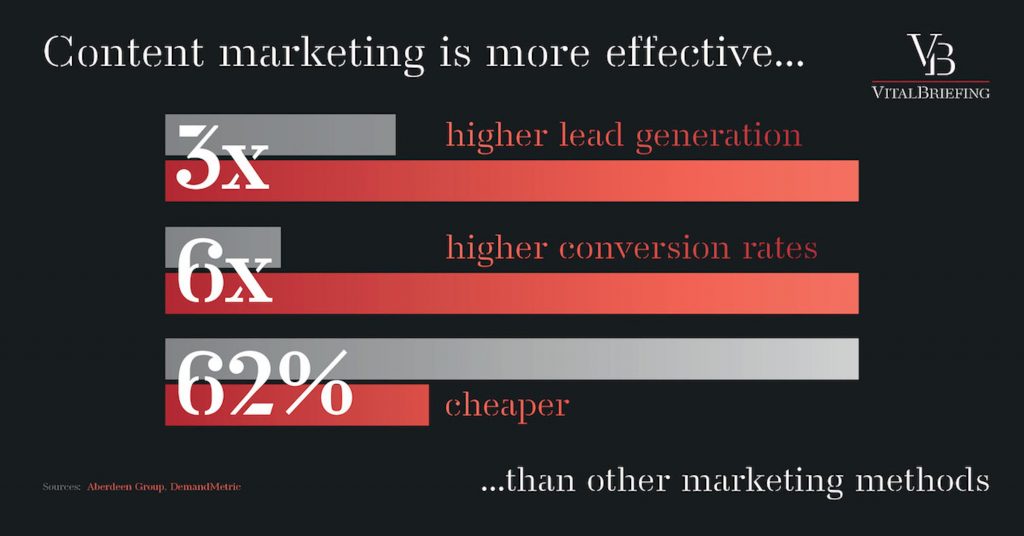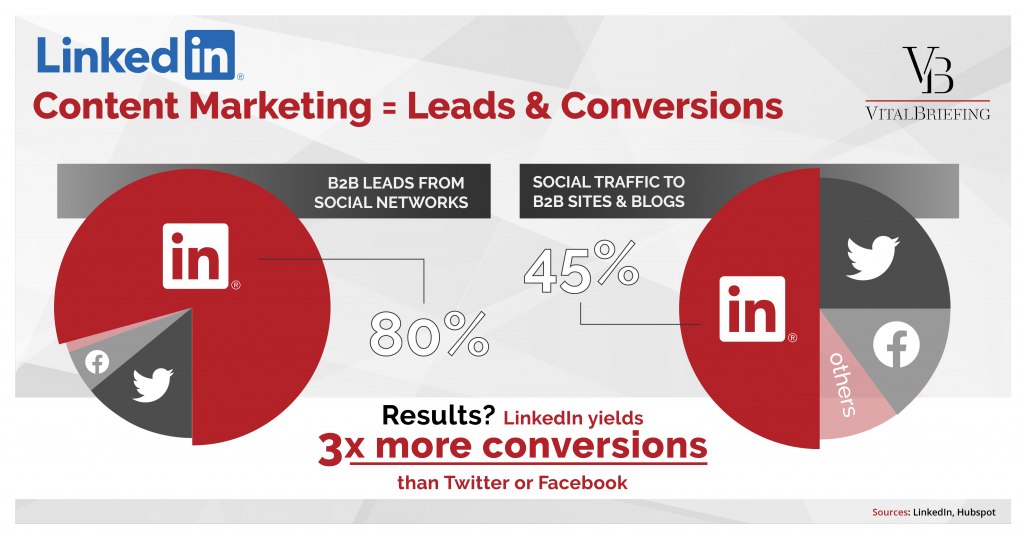Content marketing has grown into one of the most critical elements of any digital marketing campaign.
That makes sense considering that the average B2B buyer now consumes some 13 pieces of content — up from five just a few years ago — before committing to a purchase. Moreover, studies have found that compared to traditional marketing methods, content marketing is cheaper and produces higher numbers of leads and conversions.

Yet, although business leaders increasingly acknowledge the importance of content and the need to create it, persuading company executives to invest time, budget and resources to ensure a consistent and dynamic output of original, high-quality content often turns into an uphill battle.
Why is it so hard to turn the obvious into action?
Content marketing’s ROI conundrum
Here’s the problem: Content marketing and ROI are not easy bedfellows. “There’s very few benchmarks, a little research and some examples that have been published on content marketing ROI,” explains Michael Brenner, CEO of the Marketing Insider Group.
For such a widely-used marketing method, that isn’t much to go on.
From the outset, this means that the sector hasn’t yet found a reliable answer to the ROI question. It also makes it that much tougher to convince decision-makers to buy into content.
The relationship between spend on developing content and the revenue those efforts generate isn’t in-your-face obvious. Rather, it generally requires a combination of educated conjecture and guesswork.
And because no widely-accepted, foolproof formula to gauge the return on content marketing yet exists, justifying the spend is all the more challenging. Indeed, every C-suite wants sales metrics — data that showcases in real numbers the correlation between strong-performing content (or a content-focused campaign) and the bottom line.
Not so easy.
Content marketing support sales…but isn’t a sales tool
Content marketing sits very nicely somewhere in between marketing and sales.
What we mean is that it most certainly is not a sales-specific tool — but a tool that supports sales. This reality presents a substantial problem for marketers.
On one hand, the impact that original, well-crafted content can have on digital marketing metrics (e.g. lead generation) is impressive. Just look at how effective content marketing on LinkedIn can be:

On the other hand, though, finding a reliable way to measure the link between a specific piece of content and the sales it yields is counter-intuitive. It’s simply too hard to prove a cause-and-effect in relation to revenue.
Yet, that’s what many content marketers have to do.
Focus on value
The business approach to content marketing has evolved over the past 15 years. No longer can selling serve as its focal point. Straight sales pitches increasingly are ineffective — simply spewing facts and figures doesn’t have the desired affect.
Instead, digital audiences are after content that provides tangible value. Indeed, engaging, high-impact material that offers valuable information or insights — for example, content marketing, branded content and thought leadership — will sell a service or product online far more effectively than a sales pitch.
In part, this shift has been driven by consumer preferences. Nobody wants to feel like a sales mark. However, a newer and powerful factor has ever-greater influence: how search engines determine the value of web content.
In its rankings, Google, for instance, has doubled down on content quality, expertise and authority. In other words, high quality content that performs well with audiences because it addresses a clear need will rank higher on search engine results pages for related searches.
Great content that answers a visitor’s intent in a clear manner without appearing as condescending will go a long way. And, of course, high quality content gets shared and viewed more.
The idea of ‘staying relevant’ is crucial for content. As the focus shifts from ‘selling’ to providing value, content is your best tool.
The truth about ROI and content marketing
However — and we know it’s not pleasant to read — don’t expect fast results. Experts across the board — including digital marketing guru Neil Patel and the Content Marketing Institute — all offer similar advice: with content marketing, you must play the long game.
Business leaders who obsess over ROI are making a serious mistake because that obsession forces their marketing teams into a flawed content strategy.
“If you are defining your ROI metrics solely to demonstrate results and to justify your organization’s content marketing budget, you may get a confusing picture when you try to look at your analysis to determine what’s working, what’s not, and how you can make your content marketing strategy better,” says Brenner.
Now, we’re not advocating that you throw ROI out the window. It’s imperative for content marketers to figure out how their strategy will boost the bottom line.
But, if your content isn’t outwardly selling anything, how exactly do you do that?
Measuring the success of your content
As we explained in another recent blog, the success of content marketing is about measurement and “defining the key metrics that will most significantly impact sales, which vary from one company to the next and hinge on factors including the type of content, platform and media type.”
We’re not talking just in terms of your sales-affiliated KPIs such as qualified leads or conversions. Experts agree that non-financial gains including audience growth and SEO rankings are also important.
Ultimately, content marketing only works well if your campaigns post strong numbers for those metrics that are most crucial to your ambitions. Trust us: the return on investment will follow.
Metrics to consider include brand awareness growth (social engagement), SERPs rankings (SEO), average time spent on content/site, subscriber growth and site traffic growth (page views, page users, pages per session).
Free tools including Google Analytics and Hotjar can help with these types of KPIs.
ROI of content marketing: tips and tricks
Ultimately, you need to consider three key elements for your content-marketing ROI: cost, utilisation and performance.
Cost: This is a standard ROI component. A good way to figure out whether your ends justify your means is to know how much you spend on average to produce original content and compare it against your core performance KPIs.
Utilisation: Don’t create content for content’s sake. Ensuring your content is being disseminated as widely as possible and that it isn’t going to waste will boost its performance.
Performance: The success of your content is, of course, tied directly to its quality. And as already stressed, you can calculate that value by bringing it back to those success metrics you should have identified. Don’t look only at the major content KPI categories such as pageviews and social shares. Although good indicators of your content’s performance, you should still pay close attention to the original business case that got you started on this content journey.
Finally, there are a number of free guides online that can help. Brenner, who also is the author of The Content Formula offers strong guidance in this blog.
Discover the most important tips and tricks that will help you create effective and engaging content marketing:

